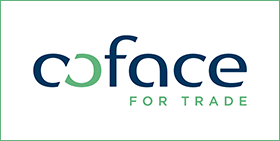Coface’s new service to guide companies in IFRS 9 compliance and improve risk management

Under the new IFRS 9 regulations which came into effect in January 2018, companies urgently need to put into place more accurate and forward-looking accounting systems for measuring Expected Credit Losses (ECL) on all their trade receivables. The detail and volume of work needed to prepare financial statements will therefore increase substantially. As a worldwide reference in credit insurance and risk management, providing real-time information on buyers and their environment, thanks to its new Coface Reserve 9 service, Coface is ideally placed to support businesses in the accurate calculation of their ECLs and to accompany them in their transition to IFRS 9 compliance.
Most companies are only half way through the transition to IFRS 9 compliance
According to a recent survey by Coface of its corporate clients, as at the end of the first quarter 2018, over 50% of the companies subject to these new regulations are still in the very early stages of implementing IFRS9. Others, although more advanced, are still not yet in the phases of completion. Complying with the new standard is more resource-heavy for companies when compared to previous regulations, as it requires greater expertise, quarterly planning and a high quality continual flow of ECL data on companies’ trading partners - which they do not necessarily have. Thanks to the credit-worthy information which it collects and analyses from over 200 countries for its credit insurance business, Coface is ideally placed to help companies forecast losses on trade receivables and thus further improve their corporate risk management.
Coface’s ECL model based on deep expertise in risk management
Coface has anticipated the fact that auditors and chartered accountants will progressively show higher levels of expectations in terms of details and controls required. A model for ECL calculations has therefore been developed, based on online solutions for credit risk analysis and decision making. This model is now available to be used throughCoface Reserve 9service. The new service allows companies to easily and accurately identify, measure and forecast the risks on their trade receivables and assess their potential losses.
ECL estimates are calculated by cross-referencing data on three parameters: the buyer’s Probability of Default, the exposure and the proportion of potential loss (known as the Loss Given Default) expected in the event of the buyer’s payment default. In order to assess the Probability of Default and the Loss Given Default, Coface analyses credit risk information which includes data on the company’s history of payments, creditworthiness and ‘chances of recovery’ statistics. The model does not only rely on historical data and Coface’s economists are continually updating and testing the data sets, through forward looking analysis. This ensures that they remain relevant for each period assessed. The model also factors in the impact of credit insurance, providing two ECL values (with or without insurance).
“Coface Reserve 9 is a new opportunity to respond to our large clients’ needs by supporting them in a regulatory changing environment. As a specialist in trade risk management, Coface has developed useful methodology to guide companies in their trade receivables reserves impairment”, explains Karine Damman, Coface Global Solutions Director.
“Coface supports 50 000 businesses worldwide, protecting them and strengthening their ability to take the credit decisions necessary to sell on their domestic and export markets. Our expertise contributes to help companies minimise the amount of provisions they need, notably by offering risk-taking recommendations and trade credit insurance solutions”, adds Nicolas Garcia, Group Commercial Director.


